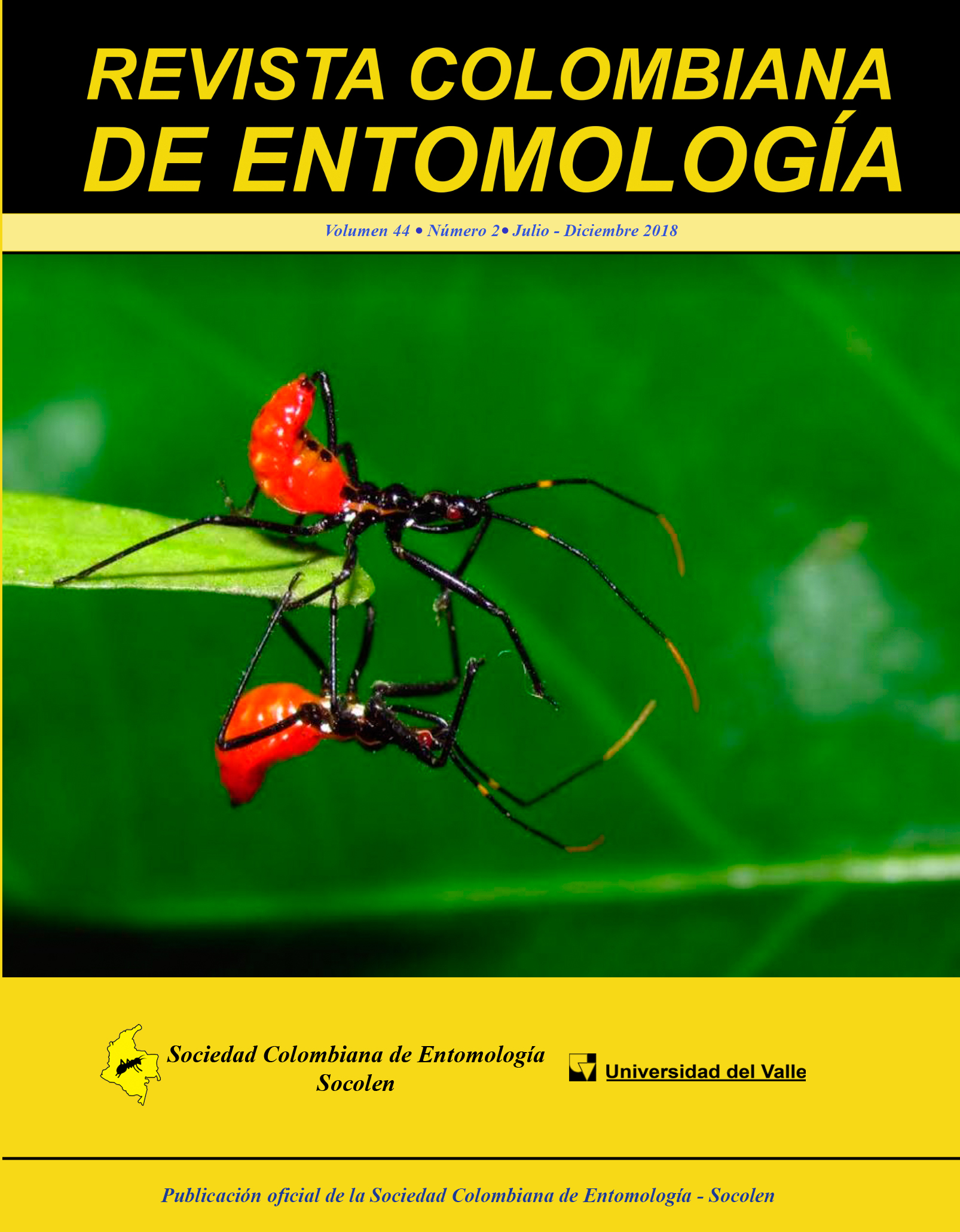Population fluctuation of thrips (Frankliniella cf. gardeniae) in mango crops in Tolima, Colombia
Keywords:
Phenology, inflorescence, flowering, pest, climatic conditionsMain Article Content
Mango is one of the tropical fruits with the highest production worldwide; in Colombia is a crop with a great export potential. However, insect pests such as thrips, can affect its quality and production. In this research the relationship of the population fluctuation of thrips (Frankliniella cf. gardeniae) with climatic conditions and mango (var. Yulima and Tommy) phenology in Guamo and San Luis (Tolima) was evaluated. Trips were weekly sampled in both inflorescences and young leaves of mango and associated weeds; phenological stages of the crop and climatic conditions (temperature, relative humidity and precipitation) were recorded and the probability of the presence of thrips in mango flowers was determined. A total number of 8.609 thrips individuals, including adults and immatures, were collected. The population fluctuation of Frankliniella cf. gardeniae presented a positive relationship with flowering (R = 0.79 var. Yulima and Tommy) and temperature (R = 0.43 var. Yulima; R = 0.48 var. Tommy). It was recorded the genera of the phytophagous trips Frankliniella and Haplothrips, in the weeds Desmodium tortuosum and Melochia parvifolia. The flowers and fruits up to 8 mm size were the most susceptible to insect attack. Finally, the higher probability of the thrips presence in mango flowers had two main periods, 7-63 days and 161-163 days after flowering. Frankliniella cf. gardeniae behaved as an occasional pest, present when the food source was available and the climatic conditions were adequate.
Downloads

This work is licensed under a Creative Commons Attribution-NonCommercial-ShareAlike 4.0 International License.
Authors retain the copyright on their work and are responsible for the ideas expressed in them. Once a manuscript is approved for publication, authors are asked for a publication license for the term of legal protection, for all territories that allows the use, dissemination and disclosure of the same.

